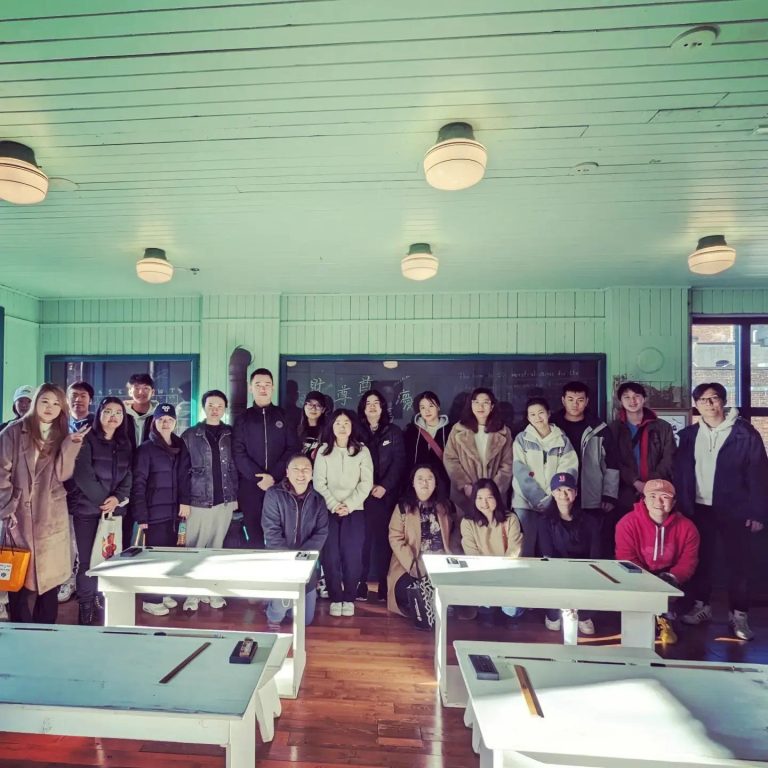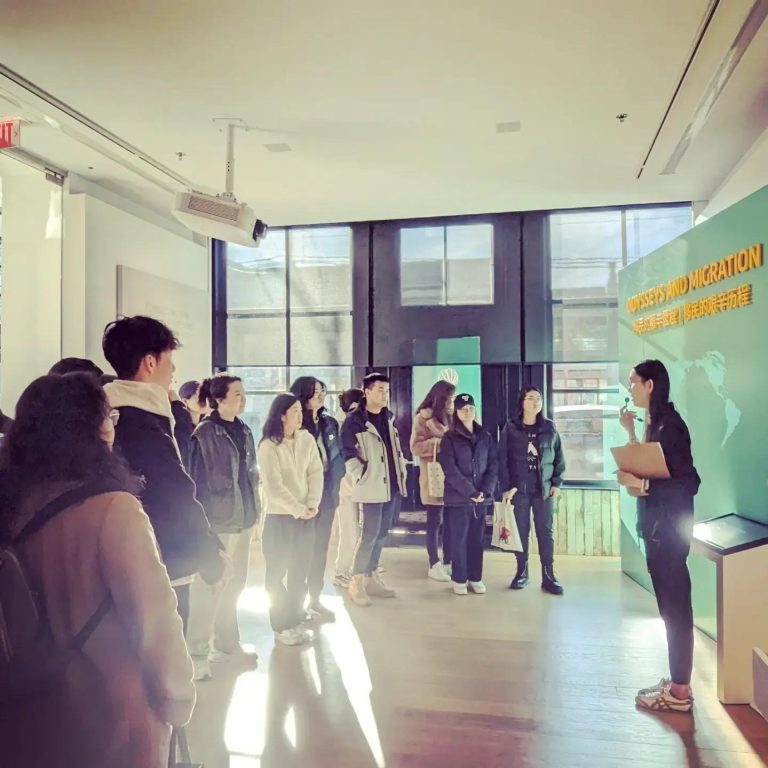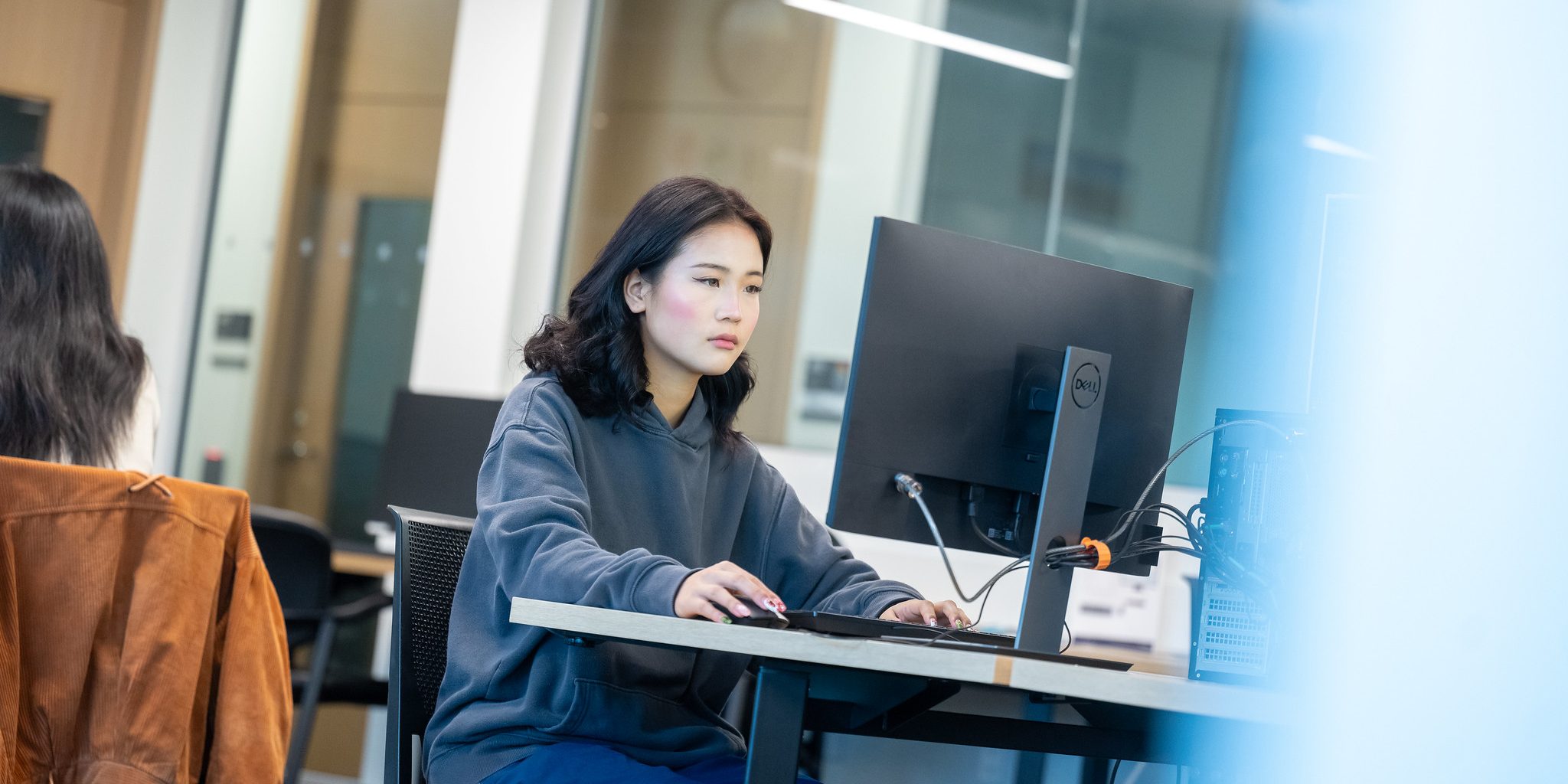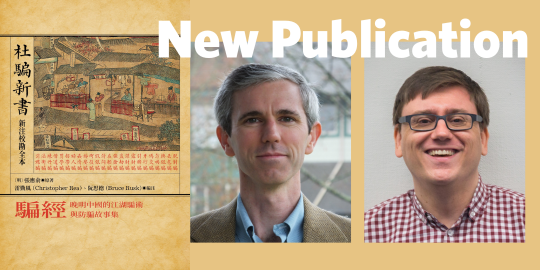On November 19, 2023, twenty students from CNTO 301 – Basic Cantonese I and CNTO 401 – Intermediate Cantonese I enjoyed a guided visit to the Chinese Canadian Museum with their instructors Zoe Lam and Raymond Pai. Situated in historic Chinatown, the Chinese Canadian Museum is inside the Wing Sang Building, a heritage site originally built by the merchant Yip Sang in 1889. Since its inaugural exhibition, A Seat at the Table: Chinese Immigration and British Columbia in 2020, the museum’s effort to elevate Chinese Canadian voices and foster inclusion has been recognized by numerous honours, such as the Governor’s Award by the National Trust For Canada.


Students and instructors exploring the historic classroom in the Wing Sang Building, where the famous merchant Yip Sang’s 23 children used to study in the early 20th Century
Since a Cantonese guided tour was requested, everyone’s Cantonese listening skills were put to the test. However, it turned out that the most valuable lesson from this trip was more than language skills. Vanessa Liang from CNTO 301 commented, “What struck me most was the cultural richness that I was not aware of, despite being Chinese Canadian myself. The fact that Canadian-born Chinese children were not able to receive real citizenship in Canada until after World War II sounds completely bizarre to me. Chinese Canadians had to prove that they were worthy of being a Canadian citizen by enlisting in a war for a country that didn’t want them at the beginning. It made me think about how lucky I am to have been born in this century.”


A tour guide explaining waves of migration in history which led to the diversity of the Chinese Canadian community today
Another student Nadia Lee also found the experience rewarding, “It’s interesting to see the parallels to Chinese American history in the United States, which is where I’m from. The most impactful exhibit of the museum was all the individual immigration papers with people’s names and pictures. Because in some way or another, they paved the way for us to be here in Canada by creating this community that preserves our heritage, despite all the hardships they faced. Through the guided tour, I also learned specific Cantonese words for discussing Chinese Canadian history which I think is quite valuable to know.”
Marcus Lai and Matthew Tsui were especially impressed by the short film about Chinese bachelors who were unmarried in the rest of their life due to the discriminatory laws, “Although I learned about the Head Tax and Chinese Exclusion Act in school before, I had never thought about its social consequences on the lives of Chinese men who were stuck in Canada. I am glad that I got a chance to watch this documentary so that all those men would not be forgotten.”


Students perusing historic documents shown in the exhibition titled The Paper Trail to the 1923 Chinese Exclusion Act
Yoyo Yang from CNTO 401 also shared her thoughts: “The museum did an amazing job to help the public understand the history of Chinese immigration to Canada. I particularly appreciate the design and layout of the text panels, the story playback in the screening rooms, and the high-quality services. I look forward to participating in similar extra-curricular activities in the future.”
The Cantonese Language Program would like to thank the Chinese Canadian Museum for their thoughtful arrangements and warm hospitality. The active participation and positive feedback from students is our motivation to keep creating new learning opportunities outside the classroom.


